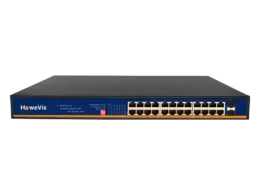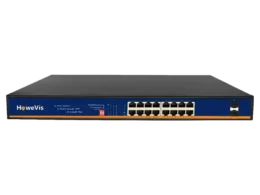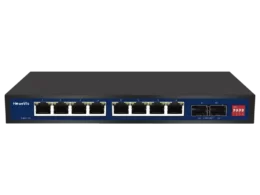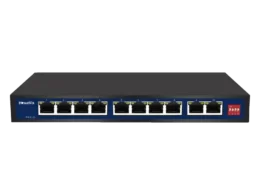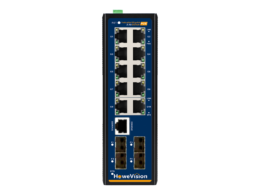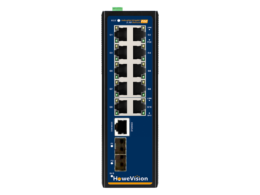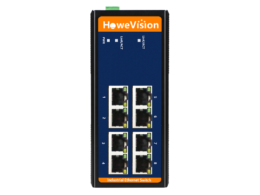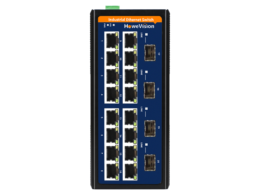Laptops, IP cameras, and voice-over phones usually are available in our homes. Maybe you are employing them for different reasons but, still, they are efficient enough to protect you. Have you ever wondered which type of technology they use? Moreover, different types of devices have different power. So, we need such a system that provides them with all the requirements — different power.
Can you guess the name of that power system? Maybe yes because it is popular among all the electrical power systems. I suppose your guess is correct — it is PoE.
Maybe you are having questions about PoE. How did it originate? Why do we call it PoE? Have a look at our detailed guide — How PoE was born?
What is PoE?
I didn’t break the code word “PoE” into its true meaning. What do you think it can be? PoE refers to Power over Ethernet. Have you seen Ethernet cables in your home? Nowadays, in every home or office, you can find different types of Ethernet ports. These ports are a source of power and data connection.
In PoE technology, we use Ethernet cables to get the data connection and power supply. So, the typical power from the PoE is given as:
- From 12 Watts to 95 Watts of power
- Up to 10 Gigabytes of speed
Such a high power supply and data speed are not possible without Power over Ethernet. Therefore, offices or industrial PoE switches use Power over Ethernet to get the required power.
Still, you need knowledge about PoE. No worries have a look at the guide — What is PoE?
What are the different standards of PoE?
PoE has different principles upon which it works. You are getting 95 watts of power only if it uses the IEEE 802.3bt standard. This type of power is not even possible with IEEE 802.3af standards. That means different PoE standards enable different types of power supply and data speeds. However, the first standard is 802.3af. IEEE introduced it in 2003. Moreover, you can have a look at all other standards of PoE as below:
- PoE Type 1— IEEE 802.3af
- PoE Type 2— IEEE 802.3at
- PoE Type 3— IEEE 802.3bt
- PoE Type 4— IEEE 802.3bt
So, depending on the standard type, you can determine how much power you can get from the PoE switch.
To learn more about PoE standards, you can read our article — What are different types of PoE?
What is PoE type 1 802.3af?
The earliest standard from the IEEE is PoE 802.3af. In 2003, all the PoE devices worked on the principles introduced by the 802.3af standard. Initially, this system provided low-power devices with power. However, we call it PoE or PoE type 1 sometimes.
Features of PoE:
PoE has several features in terms of power and voltage. However, have a look at the following features you can get by employing PoE.
Power
Electrical power is the main factor that determines which devices can get power. In this case, the maximum output power from the power supply is 15.40 watts, while the minimum power available to the power device is 12.95 watts. By that means, it is suitable for devices of power up to 15 watts.
Voltage
Volts are unit of voltage that plays a significant role in the working of devices. The output voltage available at the power supply ranges from 42 to 57 volts. If we highlight the supplying voltage at the power device, it is 37 to 57 volts. Just incredible!
Current
The maximum current is 350 milliamperes. An ampere is a measuring unit of current.
Ethernet compatibility
Ethernet has several forms that can be compatible with specific devices. In the case of the IEEE 802.3af standard, Ethernet forms 10BASE-T, 100BASE-TX, and 1000BASE-T are compatible.
Ethernet port
The port type determines what data speed you can get from the power supply. If you want to use Cat3 or Cat5, that is suitable for the PoE. Even higher categories like Cat5e, 6, or 7 can also be the ones that you can use for your power supply.
Port Pairs
Two-pair ports work fine for the PoE type 1 standard.
What is PoE type 2 802.3at?
IEEE upgraded the type 1 802.3af standard and introduced a new version 802.3at. It is more efficient and provides us with a high power supply. We also call it PoE+ or PoE type 2.
Features of PoE+:
Like the PoE, it procures the following features that can be of worth.
Power
The output power for the PoE+ supply is 30 watts, while the minimum power available to the power device is 25.5 watts. As you can see, it is more than what we discussed in PoE type 1. That’s why we can consider it an upgraded version of PoE+.
Voltage
Like PoE type 1, it has a different voltage but is very similar to PoE. For example, the output voltage at the power supply ranges from 50 to 57 watts. The supplying voltage that is available at our power device ranges from 42.5 to 57 volts.
Current
The maximum current for PoE+ is 600 milliamperes. It is almost double what we learned from PoE type 1.
Ethernet compatibility
Ethernet forms like 10BASE-T, 100BASE-TX, and 1000BASE-T are compatible with the PoE type 2 as well.
Ethernet Port
If you are thinking of using Cat3 Ethernet ports, it is not possible with PoE+. The minimum requirement for Ethernet type is Cat5.
Port Pairs
The minimum requirement for Ethernet port pairs is two pairs of copper wires wound around each other.
Is PoE+ Compatible with PoE?
What do you think about the answer to this question? As I already stated, IEEE introduced PoE+ as an upgraded version of PoE. As per the concept, PoE+ is compatible with all PoE devices, but the reverse can not be possible. For example, you can use PoE+ power for your low-powered devices. But, you can not use PoE for your high-powered devices. Therefore, PoE+ is better and more flexible compared to PoE type 1.
Applications of PoE+:
As PoE+ is compatible with all PoE devices, you can install this system in your home and get the power. It can be more cost-effective and reliable compared to the use of PoE 802.3af. For the following types of devices, you can employ the PoE+ technology.
- PTZ— pan, tilt, and zoom IP cameras, primarily for surveillance purposes
- Video Internet Protocol phones
- Alarm system for security reasons
Moreover, it can work if you want to use it for low-powered devices that require power of fewer than 30 watts. For data speed up to 1 gigabyte is one of the most popular features of the PoE+ system.

